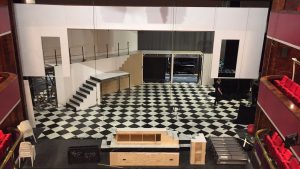Due to the nature of Contemporary Performance, and the amount of time the tech team spent with each performance, it was often challenging to pinpoint specific plot points in each piece of work. However, after conversations with the creatives of each piece, it became apparent that the work is more about emotional responses in audience rather than conveying a story. In light of this, here is what each artist says about their work and the emotional responses I had to each piece.
CPP3 Group A – Birds I View
‘An exploration of the mediated perception of female sexuality versus our reality, through construction and deconstruction of space, sound and image.’
This piece, to me, showed how women are forced by society or external factors to conform to certain, at times garish, standards, and how their own perceptions of beauty and thought are made to feel incorrect and unworthy of consideration or praise by the world.
Production Challenges : Creating and maintaining a white box feel, and facilitating apple, petal and coat drops from the catwalks.
CPP3 Group B – The Church of the Poisoned Mind
This piece felt like it wanted to comment on how broken our current society is by fixating on the real life experiences of the performers and the difficulty they face on an every day basis. These include spending time in prison, to being a single mum on benefits, to having a developed mental disability. They did this through use of shocking imagery, spray paint, and movement.
Production Challenges : Creating the industrial platform design requested by the group, cleaning the venue after the mess created by the show, flying dolls and microphone pieces
CPP3 Group C – The Pains of Being Pink at Heart
‘The Pains of Being Pink at Heart investigates five performers ever changing relationships to this ungraspable, undefinable, crazy little thing called love.’
This piece commented on society’s opinions and reactions to love, examining how each of the performers relate to different kinds of love and how this has impacted each of them on an emotional level. Love was shown through friendship, care for animals, sexual lust, and from an a sexual, scientific standpoint. They explored love through the songs of Mika.
Production Challenges : Hanging a rope swing in the space, creating a seamless, pink floor, flying an inflatable heart
CPP2 – Before History We Danced
This piece seemed to want to explore how dance, as a medium, can bring people together, regardless of factors like race, age, gender or sexual orientation. Through the addition of performers from the Glasgow community, the ensemble performed a one hour improvised dance piece in a club-style environment, performing with each other to convey the ties that join every one of us together – shown through movement.
Production Challenges : Creating an in-the-round club venue, flying a truss square on motors, creating bleacher-style seating banks
CPP1/4 Group A – Balls
‘We’re currently exploring decadence, façade, and class.’
This piece seemed to satirise the concept of wealth and priviledge. The performers portrayed a caricature version of the aristocracy, gorging at banquets, listening to appalling music, and parodying our preconceptions of those of wealth in society. It sought to make the audience feel inferior and unworthy by showing them as the poor, huddled masses.
Production Challenges : Transporting Opera set elements to the Chandler without modification, hanging a valuable chandelier
CPP1/4 Group B – Exercism
‘This performance involves five people and a number of exerting acts including dance numbers, performers colliding with each other and a full 20 metre beep test. The performers are exploring the things they endure, both physically and emotionally.’
This piece, it seemed, wanted to show how far humans will push themselves to try and keep up with others in society. It detailed the extremities that the human body can push itself to, be that to conform with ‘manly’ masculine stereotypes, to try and achieve a fit and healthy physique, to appear beautiful to others, or to show that you are not held back by factors like your race.
Production Challenges : Creating a traverse space in a tight turnaround time, allowing performers freedom of space whilst working within safety guidelines
CPP1/4 Group C – The Big Freeze
‘The show is set is in a frozen landscape. Themes of creating an illusion and breaking it (make-believe and meta) being emotionally frozen, numbness and wanting to feel something.
Being frozen, stuck, in pain – not being frozen – illusion of being frozen.
Frozen in terms of as a reaction of something, creative/process, cold – needing more warmth. ‘
To me, it seemed like the performers were trying to convey the dangers of putting up emotional barriers – shown through the cold of emotional disconnect. They tried to show how, by breaking down those barriers and by trying to reach out and share emotionally with others, we can break free from the isolation we put ourselves in, and become more involved members of society.
Production Challenges : Creating an icy, cold environment in one of the hottest venues known to man, building a seating bank.


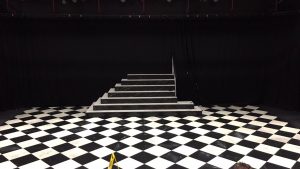
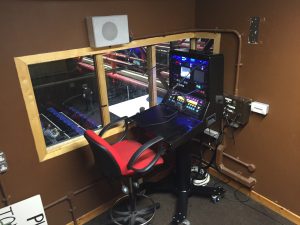
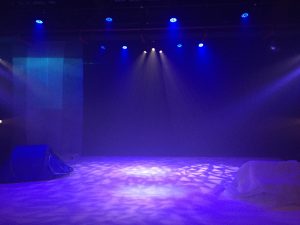 DSMing in a Winter Wonderland
DSMing in a Winter Wonderland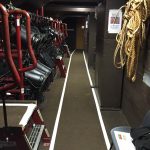
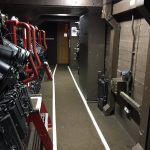
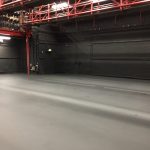
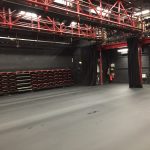
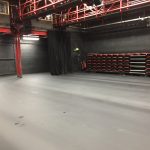
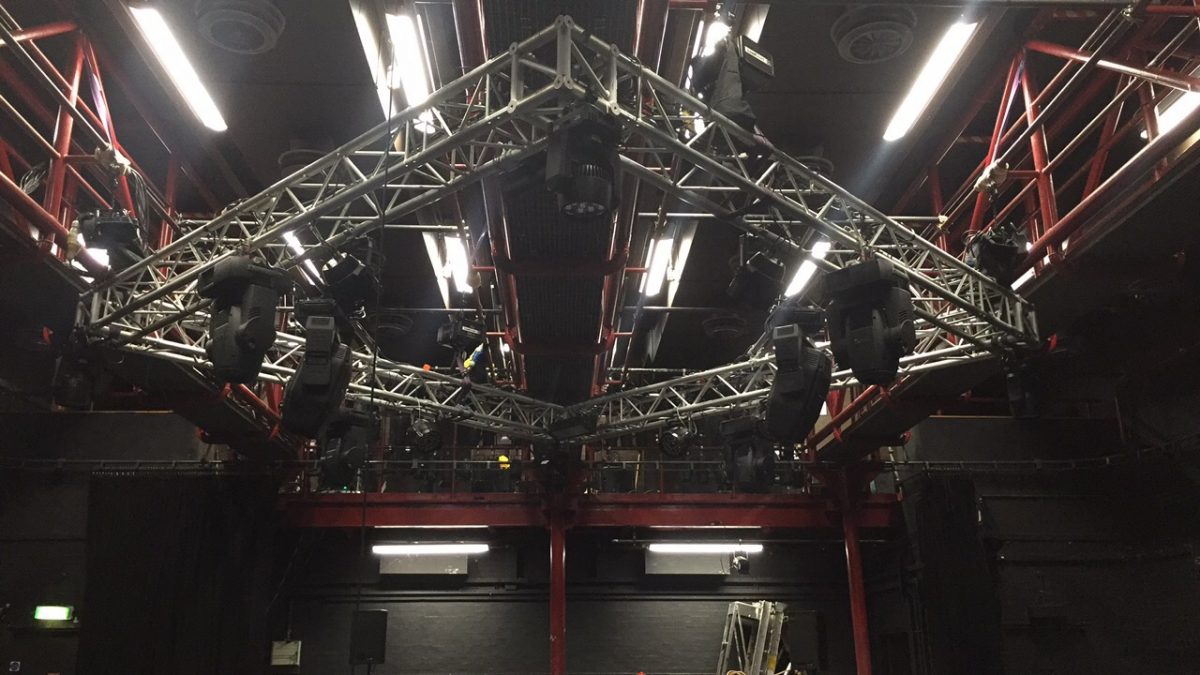
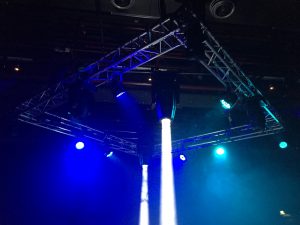
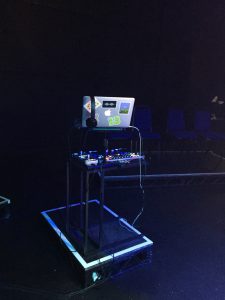
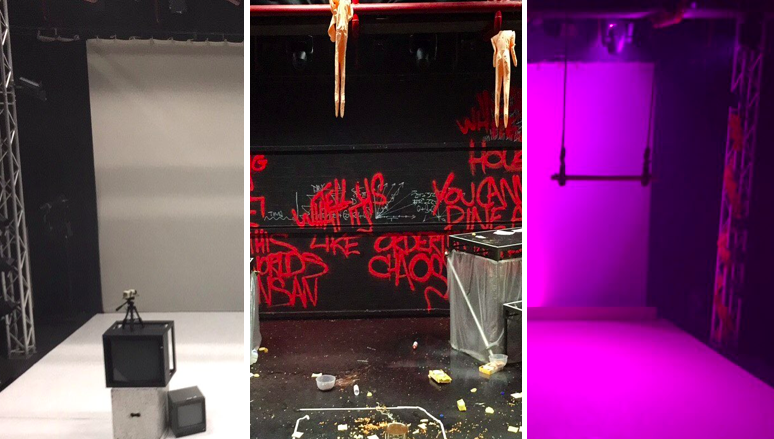
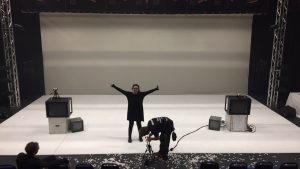 Our Beautiful White Box
Our Beautiful White Box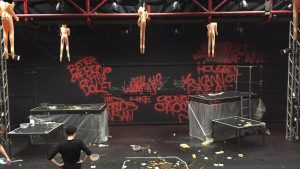 Guess The Reason We Didn’t Do a Wet Run
Guess The Reason We Didn’t Do a Wet Run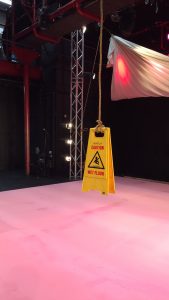
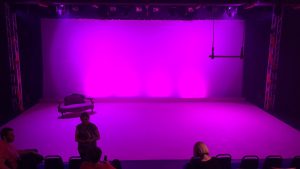
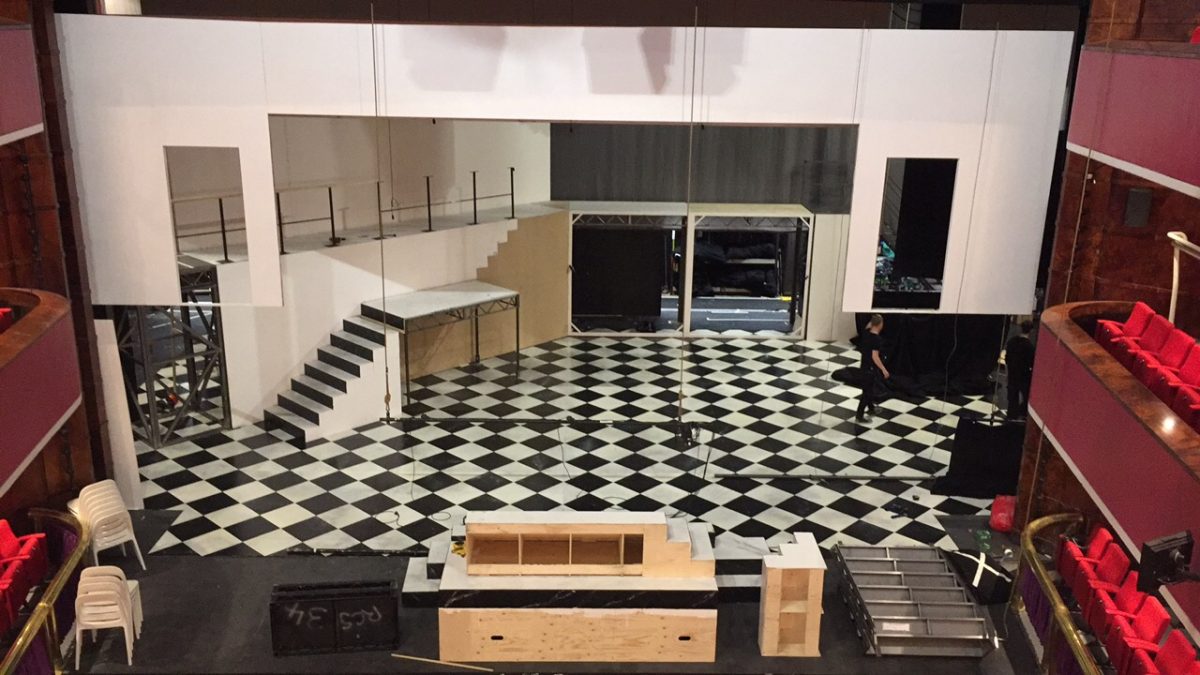
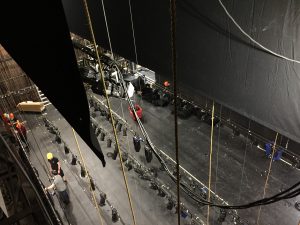 itely
itely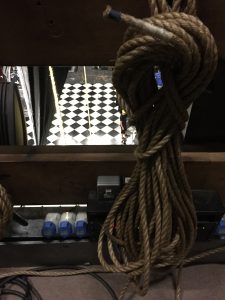 , something I’ve struggled with since our stage induction in September. But the simple way she showed, and the fact that I then went on to do it dozens of times, drilled the process into me to the point where I could do it without looking. Learning how to do this process to hang on cleats as well was great, as it meant I could take charge of tidying the prompt side fly floor, running lines as straight as I could make them and trying up the excess to aide flyman Reece. I could also remove our lines from a floor that was becoming more and more covered in the cable mountain monstrosity of the electrical department. To be taught like this by a peer was a really nice experience, as the slight fear factor in messing up was removed, and I could feel more at ease to ask questions and to make mistakes. This is definitely a way of working that I would be looking to promote and take part in with those in the years that will follow me, as it also helps to reinforce my own learning by teaching others – a mantra Malcy always pushes.
, something I’ve struggled with since our stage induction in September. But the simple way she showed, and the fact that I then went on to do it dozens of times, drilled the process into me to the point where I could do it without looking. Learning how to do this process to hang on cleats as well was great, as it meant I could take charge of tidying the prompt side fly floor, running lines as straight as I could make them and trying up the excess to aide flyman Reece. I could also remove our lines from a floor that was becoming more and more covered in the cable mountain monstrosity of the electrical department. To be taught like this by a peer was a really nice experience, as the slight fear factor in messing up was removed, and I could feel more at ease to ask questions and to make mistakes. This is definitely a way of working that I would be looking to promote and take part in with those in the years that will follow me, as it also helps to reinforce my own learning by teaching others – a mantra Malcy always pushes.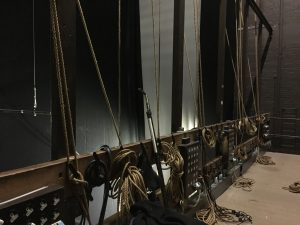 r pressure. Though we had been shown earlier in the year that the best way of joining two lines with a sheet bend, Malcy detailed why, in many instances, this wasn’t the case, and taught me how to tie a Fisherman’s properly – a knot that it still pleases me every time I pull it off. This, along with the barrel knot and a proper figure of eight on the bite are possibly the most valuable things I have taken out of my opera experience, as they went on to be invaluable additions to my skillset when rigging in the Chandler, and have ignited my desire to add more and more knots to my arsenal – something I intend to start working with Yesha on at great lengths.
r pressure. Though we had been shown earlier in the year that the best way of joining two lines with a sheet bend, Malcy detailed why, in many instances, this wasn’t the case, and taught me how to tie a Fisherman’s properly – a knot that it still pleases me every time I pull it off. This, along with the barrel knot and a proper figure of eight on the bite are possibly the most valuable things I have taken out of my opera experience, as they went on to be invaluable additions to my skillset when rigging in the Chandler, and have ignited my desire to add more and more knots to my arsenal – something I intend to start working with Yesha on at great lengths.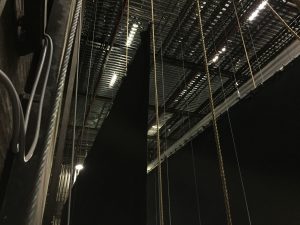 a lot more precise and would only have had to have been installed once. The automation system in the Ath is a pain, and the fewer times you have to move points, the better it is for your continued mental stability. This shows the importance of having a good grasp of Vectorworks and plan drawing, something I will continue to work towards as I advance into more senior roles. Also, though someone will likely later correct me, changing out the drift ends for Reutlingers would make me so happy. Just a thought.
a lot more precise and would only have had to have been installed once. The automation system in the Ath is a pain, and the fewer times you have to move points, the better it is for your continued mental stability. This shows the importance of having a good grasp of Vectorworks and plan drawing, something I will continue to work towards as I advance into more senior roles. Also, though someone will likely later correct me, changing out the drift ends for Reutlingers would make me so happy. Just a thought.